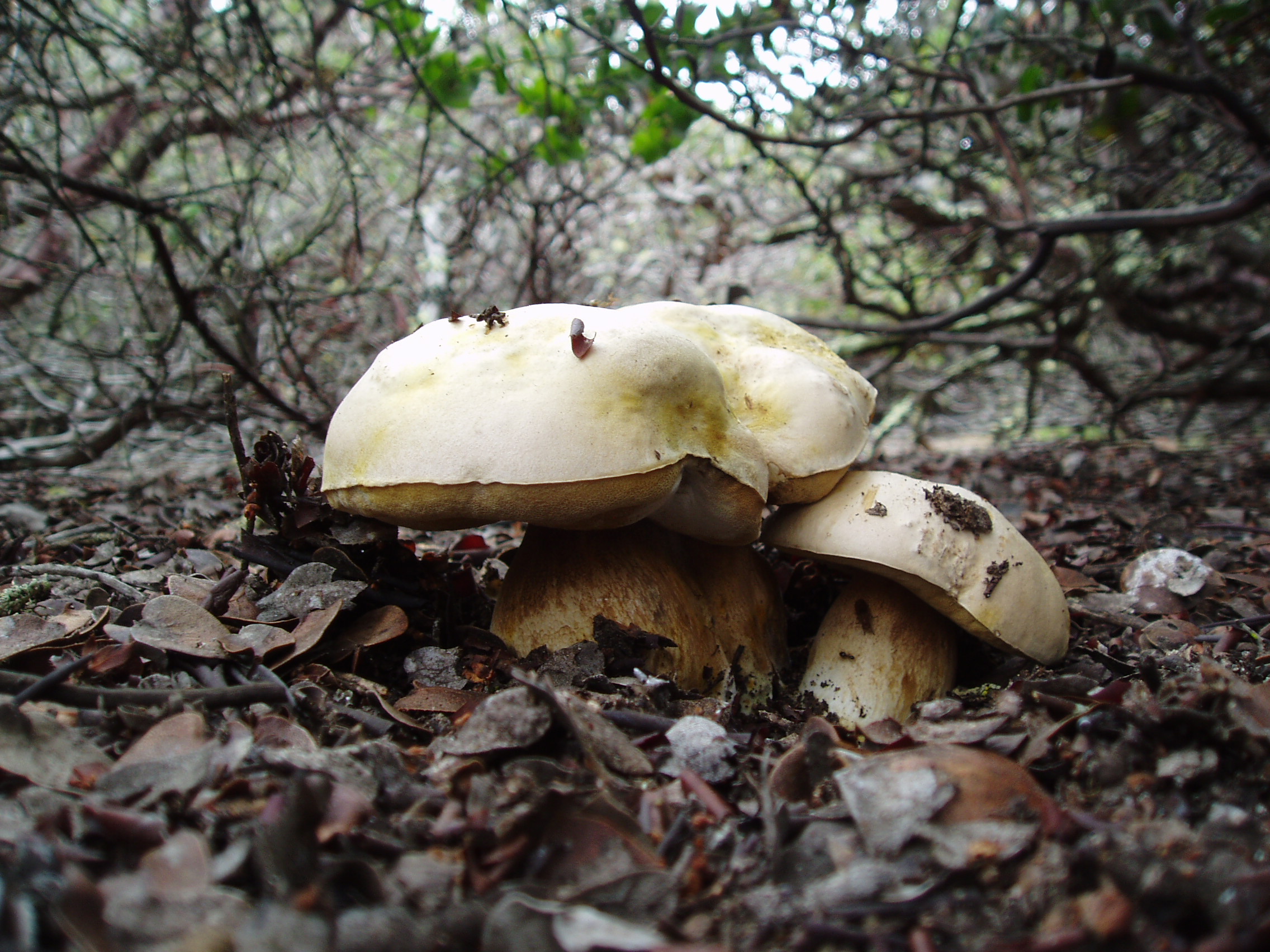- Boletus barrowsii
Taxobox
name = "Boletus barrowsii"

image_width = 240px
image_caption = "Boletus barrowsii",
San Luis Obispo County, California
regnum =Fungi
divisio =Basidiomycota
classis =Agaricomycetes
ordo =Boletales
familia =Boletaceae
genus = "Boletus "
species = "B. barrowsii"
binomial = "Boletus barrowsii"
binomial_authority = Thiers & A.H. Sm.mycomorphbox
name = Boletus barrowsii
whichGills = adnate
capShape = convex
hymeniumType=pores
stipeCharacter=bare
ecologicalType=mycorrhizal
sporePrintColor=olive
howEdible=choice"Boletus barrowsii", also known in English as the white king bolete after its pale colored cap, is an edible and highly regarded
fungus of the "Boletus " family that inhabits southwesternNorth America . Found underPonderosa Pine in autumn, it was considered a color variant of the similarly edible "B. edulis" for many years.Taxonomy and naming
It was officially described by
Harry D. Thiers andAlexander H. Smith in 1976 from a specimen collected nearJacob Lake, Arizona on August 21, 1971 by amateur mycologist Charles "Chuck" Barrows, who had studied the mushroom in New Mexico. It was previously held to be a white colour form of "Boletus edulis ". [cite journal|author=Thiers HD, Smith AH |year=1976|title=Boletes of the Southwestern United States |journal=Mycotaxon |volume=3 |issue=2 |pages=261–73|url=http://194.203.77.76/LibriFungorum/Image.asp?ItemID=85&ImageFileName=0261b.jpg|accessdate=2008-03-10]It could feasibly be confused with the similarly pale-capped "
Boletus satanas ", though the flesh of the latter stains blue when cut or bruised and it has a reddish stem and pores. The latter species is poisonous when raw.Description
The cap is 6-25 cm (2-10 in) in diameter, initially convex in shape before flattening, with a smooth or slightly tomentose surface, and gray-white, white or buff colour. The thick flesh is white and does not turn blue when bruised. The pores are initially whitish, later yellow. The
spore print is olive brown, the spores are elliptical to spindle-shaped and 13-15 x 4-5 μm in dimensions. The stout stipe is white with a brown reticulated pattern, and may be 6-20 cm (2½-8 in) high with an apical diameter of 2-6 cm (1-2 in). Like "B. edulis", it is often found eaten bymaggot s.cite book |last=Arora |first=David |year=1986|title=Mushrooms demystified: a comprehensive guide to the fleshy fungi |edition=2nd ed. |location=Berkeley |publisher=Ten Speed Press |isbn=0-89815-169-4| pages=p. 529]Distribution and habitat
The white king bolete is ectomycorrhizal, found under
Ponderosa Pine ("Pinus ponderosa") inlandCoast Live Oak ("Quercus agrifolia") closer to the west coast. Fruiting bodies appear after rain, and will be more abundant if this occurs in early autumn rather than later in the year through to winter. It is abundant in the warmer parts of its range, namelyArizona andNew Mexico , but also occurs inColorado and west intoCalifornia . It has been recorded from the San Marcos Foothills in Santa Barbara County. [Citation| author= Holmgren M, Stone T,Kelly M | title = A Plan for the Preservation and Stewardship of San Marcos Foothills Coalition,Santa Barbara,California | year = 2001 | pages =1-94 | place = Santa Barbara| publisher = San Marcos Foothills Coalition| url = http://www.sanmarcosfoothills.org/Plan4/PDF/SMFC_Plan.pdf |format=PDF | accessdate =2008-03-12]Edibility
It is edible and highly regarded in New Mexico and Colorado, and was eaten for many years while assumed to be a form of "B. edulis".
References
Wikimedia Foundation. 2010.
